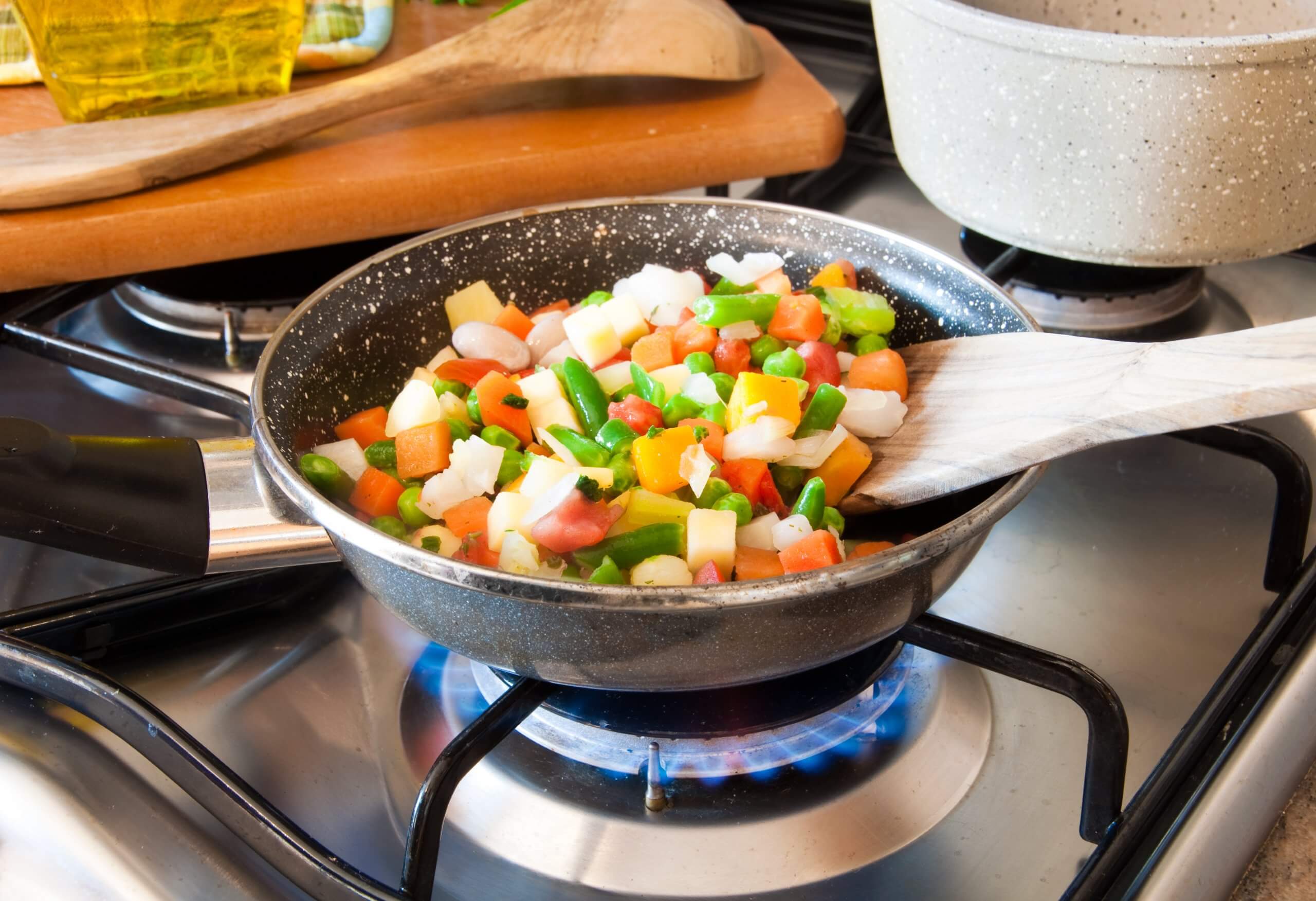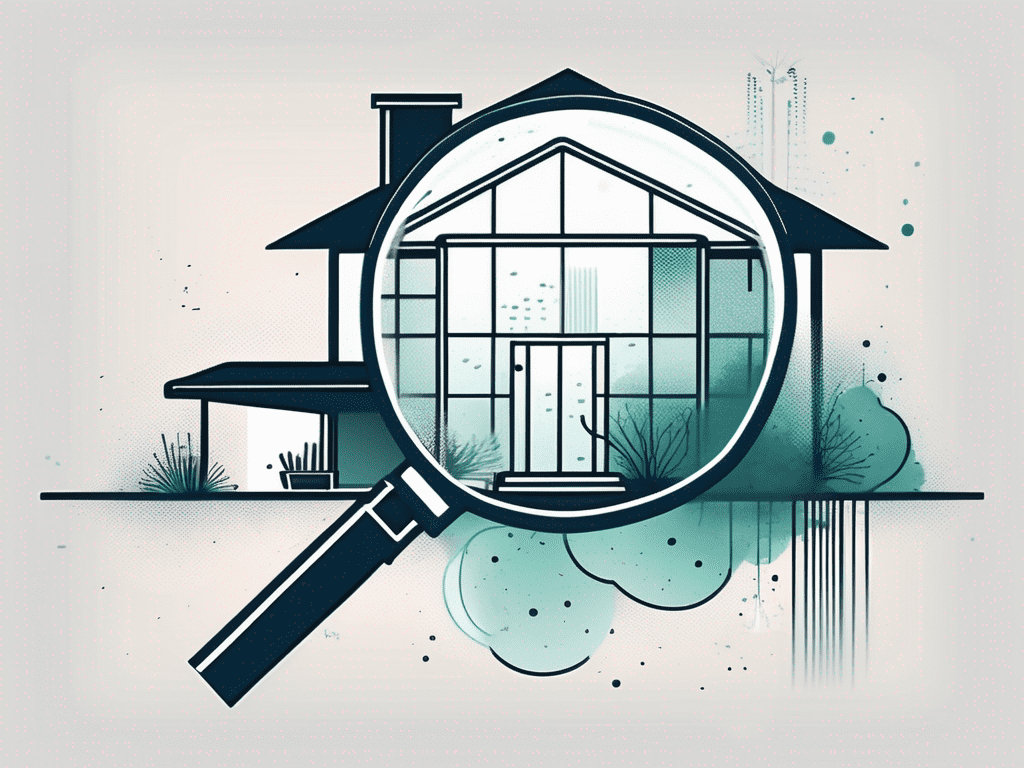Are you concerned about the impact your stove or oven has on indoor air quality? Under the broader umbrella of indoor air pollution, this is known as cooking pollution. While cooking pollution is often associated with poorer countries, kitchen pollution is a significant health risk for all. There are several ways to go about reducing cooking pollution so that you and your family breathe cleaner air indoors.
What is Cooking Pollution?
There are two main components that contribute to kitchen pollution: the heat source used to cook food and the ingredients being cooked. Heat sources range from gas, wood or electric stoves, ovens and even fireplaces. Heating ingredients like oils, fats and the like at high temperatures produces pollution. As in, the actual cooking process releases fine chemicals. That’s frying, roasting, boiling, searing, baking, boiling–you get the idea.
Cooking pollution greatly contributes to overall indoor pollution. It’s a serious concern considering the amount of time spent in the kitchen throughout a lifetime. And because indoor air can already be two to five times worse than outside, according to the Environmental Protection Agency. Plus, in the average home, kitchens are not only the heart of the home but located centrally in the space.
How Does Cooking Pollution Affect Your Health?
Cooking processes produce volatile organic compounds and particulate matter, microscopic particles that severely impact one’s health and exacerbate existing respiratory illnesses. Particle pollution is referred to as PM10 or PM2.5, depending on particle size, with PM2.5 the worst of the two because finer particles are inhaled deeper into the lungs. Find it hard to believe that cooking can be such a danger? One study even found that cooking an omelette caused higher PM2.5 exposure and pollution levels than car exhaust exposure on an average road in London.
Cooking pollution exposure can cause dizziness, fatigue, headaches, nausea and a host of other ill health effects. Some conditions may be serious enough to damage vital organs or increase the risk of cancer.
Sources That Contribute to Cooking Pollution
In order to control the risk of cooking pollution, it’s important to understand the sources. There are several stoves and oven types that contribute to kitchen pollution, some more than others.
Stoves
Gas stoves use liquid propane or natural gas to produce an open flame that cooks food. These stoves are popular due to a wide temperature range, cookware-friendliness and low cost. While all stoves can cause some form of cooking pollution, gas stoves are the greatest offenders. Gas stoves produce PM2.5 at nearly two times the rate of electric stoves. It releases chemicals like nitrogen oxide, nitrogen dioxide, carbon monoxide and formaldehyde during gas combustion, regardless if food is actively cooking.
Electric stoves require a heating element, which when warmed by electricity, heats the cookware on the stove. These stoves accommodate a variety of cookware and are cost-effective. Similar to an induction stove, the top of an electric stove is smooth. Electric stoves also produce PM2.5, although at a lower rate than gas stoves. Nonetheless, they still emit dangerous chemicals like formaldehyde that can be toxic for humans and animals.
Ovens
Gas ovens are known for preheating and cooking food quickly. These ovens are great for those who prefer to spend their time outside of the kitchen. Electric ovens preheat quickly as well, and they broil and bake food more evenly and consistently. These ovens are more suitable for those who value kitchen time. While both gas and electric ovens produce particulate matter and a host of chemicals, gas ovens emit significantly more pollutants. When using high-heat, a gas oven produces unhealthy amounts of formaldehyde, similar to that of a self-cleaning oven.
Whether gas or electric, self-cleaning ovens are also pollution culprits. When an oven reaches the prime temperature for self-cleaning, it produces particulate matter and emits carbon monoxide, nitrogen dioxide and formaldehyde in droves.
IAQ Solutions to Improve Kitchen Air Quality
The easiest way to reduce kitchen pollution is to purchase a stove that doesn’t require natural gas or liquid propane. However, this is not the most feasible option for many homeowners.
Improving kitchen ventilation is a helpful IAQ control solution to reduce cooking pollution exposure. Ventilation does not fix the source, but rather faster dilutes cooking pollutants by improving the air circulation rate. There are three ways to improve circulation: natural ventilation, spot ventilation and whole-home ventilation.
If your stove doesn’t have a range hood, then open nearby windows and doors for natural ventilation. If your stove has a range hood, be sure to turn it on every single time you cook! Range hoods work as spot ventilation, exhausting the area over the stove. Also make sure to check the range hood to ensure it ventilates to the outdoors.
yes it would be needed even for electric. Cooking generates a lot of pollution, and when you use a gas stove you are also adding NO2 pollution, which is a respiratory irritant, regulated by the EPA and implicated in many adverse respiratory and cardiovascular health effects.
— Dr. Shelly Miller, PhD (@ShellyMBoulder) December 4, 2020
While natural ventilation and spot ventilation help reduce cooking pollution levels, whole-home mechanical ventilation will produce the best results. Whole-home ventilation has the capacity to manage large indoor spaces. It removes stagnant contaminated indoor air while bringing in fresh outdoor air, improving circulation for the entire space.
Addressing Cooking Pollution
Understanding that cooking pollution presents a huge health risk is an important first step. To improve kitchen air quality, you must actively intervene in your home. Breathe cleaner air and improve your family’s health risks by addressing cooking pollution and investing in smart home ventilation practices.





